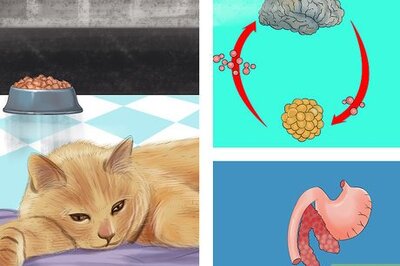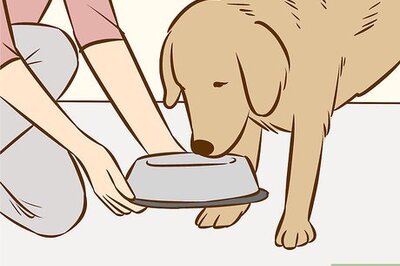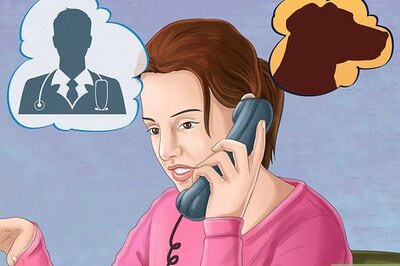
views
Sex may permeate our popular culture, but conversations about it are still associated with stigma and shame in Indian households. As a result, most individuals dealing with sexual health issues or trying to find information about sex often resort to unverified online sources or follow the unscientific advice of their friends.
To address the widespread misinformation about sex, News18.com is running this weekly sex column, titled ‘Let’s Talk Sex’, every Friday. We hope to initiate conversations about sex through this column and address sexual health issues with scientific insight and nuance.
The column is being written by Sexologist Prof (Dr) Saransh Jain. In today’s column, Dr Jain explains low testosterone or (low T), its signs, symptoms and treatment options.
Testosterone is a hormone produced in both male and female bodies. In men, it’s produced in the testicles and affects several different physical features and functions. Testosterone in men stimulates sex drive, sperm production, and development of muscle and bone mass. It is also responsible for hair growth, causes the voice to deepen, among other male features.
After the age of 30, testosterone levels in men can decline somewhat, but this is not a problem. But if your testosterone levels get too low, it can cause a range of symptoms and interfere with your daily life, overall wellness, and relationships.
Low Testosterone Signs and Symptoms in Men
The signs and symptoms of low testosterone are sometimes overlooked, attributed to other causes or ignored due to the condition itself.
Extra Body Weight
It’s not clear if low testosterone (low T) contributes to weight gain, or if weight gain contributes to low testosterone. However, fat cells play a role in converting testosterone to estrogen, the dominant female sex hormone. Healthy eating and exercise, therefore, are must.
Loss of Muscle
While testosterone doesn’t affect the function or strength of your muscles, it’s necessary for building muscle mass. If you find you’re losing muscle volume, it may be due to lower levels of testosterone affecting new tissue growth as well as existing muscle maintenance.
Fatigue
Are you tired all the time? It might not just be about getting older or mounting stress at work. Perhaps you find it hard to get yourself motivated to exercise, or you don’t feel rested after a full night’s sleep. While there are many potential causes of fatigue, add low T to the list, particularly if you have other symptoms.
Osteoporosis
Although commonly associated with older women as a side effect of estrogen loss, loss of bone mass in men results from low testosterone levels. The results are the same. Bones may fracture or compress more easily because of an increasingly porous structure.
Low Sex Drive
This is a condition that many ignore, since in some cases you won’t feel the absence of your libido, even though it’s gone. Testosterone is a key factor in triggering sex drive in men and women, when its level drops, so may your desire to have sex.
Erectile Dysfunction
Testosterone stimulates the brain to produce nitric oxide—a molecule that triggers the chemical reactions necessary for an erection. Low testosterone can make it difficult for men to maintain or achieve an erection. There are other common factors that can lead to erectile dysfunction. Some include thyroid issues, smoking, stress, alcohol and tobacco consumption, high blood pressure and diabetes. However, low testosterone is another common cause for erectile dysfunction.
Low Volume of Ejaculation
Low testosterone causes a reduction in the amount of semen your body manufactures. When this occurs, the amount of semen released during orgasm may be less than the amount you’re accustomed to. Again, in combination with other signs, low semen volume may indicate low testosterone production.
Hair loss
While there are hereditary factors that influence hair loss, low testosterone also contributes to it, and it’s the likely culprit if you’re losing body and facial hair as well.
Changes in Sleep Patterns
Decreased energy, trouble sleeping, and even sleep apnea have been associated with low testosterone.
Depression and Mood Disorders
Over 50 per cent men in a study on the effects of low testosterone also showed signs of depression, and depressed men often find that testosterone replacement therapy can sometimes be more effective than antidepressants.
If you have any or all of these symptoms of low testosterone, a simple blood test can establish your T levels. Combined with your medical history, your blood test can suggest why your testosterone levels are low. The underlying cause of low testosterone can determine your treatment options.
What you eat has a major impact on testosterone as well as other hormone levels. Eating enough protein can help maintain healthy levels and aid fat loss, which is also associated with your testosterone. A diet based mainly on whole foods is best, with a healthy balance of fat, protein and carbs, which can help boost testosterone levels.
Low Testosterone Treatment Options
If you do experience low testosterone symptoms, your healthcare provider may order a blood test to measure your total testosterone level, luteinizing hormone (LH), blood prolactin level, and blood hemoglobin or HgB.
Testosterone Therapy (or TT) is sometimes prescribed if an individual has a testosterone deficiency. Typically, there are five different ways in which this can be done:
Skin patch: A patch is applied once every 24 hours, in the evening, which releases small amounts of the hormone into the skin.
Gels: Topical gels are spread daily onto the skin over both upper arms, shoulders, or thighs. It is important to wash your hands after applying and to cover the treated area with clothing to prevent exposing others to testosterone.
Oral therapy: Capsules are swallowed or tablets are attached to your gum or inner cheek twice a day. Testosterone is then absorbed into the bloodstream.
Pellets: These are implanted under the skin, usually around the hips or buttocks, and slowly release testosterone. They are replaced every three to six months.
Injections: Various formulations are injected every seven to 14 days. Testosterone levels can rise to high levels for a few days after the injection and then slowly come down, which can cause a roller-coaster effect, with mood and energy levels spiking before trailing off.
If you are concerned about low-T symptoms, or if you’ve tried therapies that didn’t work, talk to your primary doctor or sexologist. Personalized care from a board-certified sexologist or male fertility expert is the healthiest way to get there.
Read all the Latest News , Breaking News and IPL 2022 Live Updates here.




















Comments
0 comment